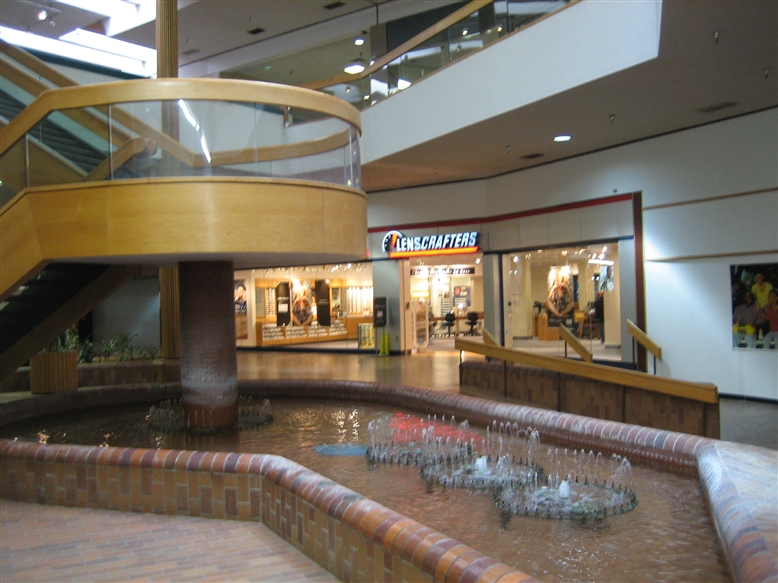
The fountains here are still running, but for how much longer?
UPDATE 5/31/07: The mall has closed permanently.
Our first post from Kansas City focuses on a one-million square-foot behemoth of broken dreams. Opened in 1980, the two-level Bannister Mall is located at the interchange between I-435 and Bannister Road in southeast Kansas City. Once a poster mall for success and the center of retailing for the whole area, Bannister quickly slid into trouble and today is on life support. While many respectable retailers remain, the majority of them are local and some are transient. Most importantly, the last anchor at Bannister left the beleagured center in March 2006. As we attempt to interrogate why this occurred, we can start with understanding the history of the mall.
The decor and layout of Bannister Mall feature a virtually unchanged design from the mall’s opening in 1980. There are many wooden adornments such as the railings, and the floor and fountains sport brownish-red tiles. There are also numerous trees and planters throughout the mall, flanked with wood trim. Also unique to Bannister are several modern art-like sculptures at the two “center court” areas throughout the long, two-level corridor connecting the former Sears on the south end to the former Jones Store on the north. Speaking of the Jones Store, Bannister’s location featured an old cursive logo with a wooden store facade which is still visible in labelscar form. Finally, there is a large, mostly vacant food court on the upper level near the Jones Store on the west side. Check out the pictures for more decor detail.
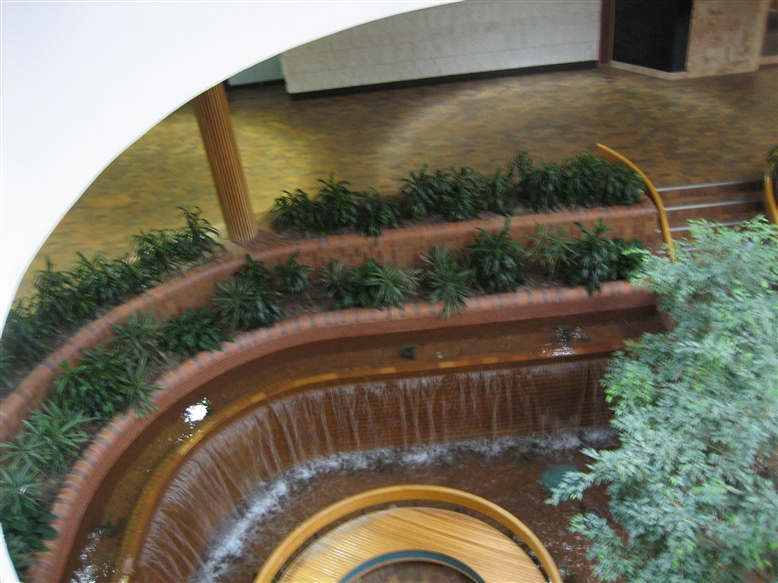 When Bannister Mall debuted in 1980, the Kansas City Star featured several full-page advertisements inviting would-be patrons to join in the opening festivities. Bannister was the first KC Metro mall which had four anchors: Jones Store, Macy’s, Sears, and JCPenney. In 1986, Macy’s became Dillards as Macy’s left the Kansas City market, but it affected the mall little. Bannister soldiered on successful through the balance of the 1980s, but the 1990s brought a long, arduous decline. According to an article on deadmalls.com, some in-line stores at Bannister during its success included: Petland, KB Toys, Musicland, Pretzel Time, Saturday Matinee, Kinder Photo, Tiny Treasures (a store for little girls), Things Remembered, Mr. Bulky’s (candy), Lady Foot Locker, Foot Locker, two Claires locations, several Jewelry stores, Kids Foot Locker, Waldenbooks and B Dalton.
When Bannister Mall debuted in 1980, the Kansas City Star featured several full-page advertisements inviting would-be patrons to join in the opening festivities. Bannister was the first KC Metro mall which had four anchors: Jones Store, Macy’s, Sears, and JCPenney. In 1986, Macy’s became Dillards as Macy’s left the Kansas City market, but it affected the mall little. Bannister soldiered on successful through the balance of the 1980s, but the 1990s brought a long, arduous decline. According to an article on deadmalls.com, some in-line stores at Bannister during its success included: Petland, KB Toys, Musicland, Pretzel Time, Saturday Matinee, Kinder Photo, Tiny Treasures (a store for little girls), Things Remembered, Mr. Bulky’s (candy), Lady Foot Locker, Foot Locker, two Claires locations, several Jewelry stores, Kids Foot Locker, Waldenbooks and B Dalton.
Although Bannister’s decline began in the early 1990s, it didn’t reach severity until later in the decade, culminating in the departure of many in-line retailers and finally JCPenney during the Summer of 2000. As early as February 1998 there were as many as 15 empty storefronts at Bannister Mall. Then, the movie theatres closed because of too many fights. In addition, more crimes were reported including petty larceny, grand theft auto, and even armed robbery. In 2001, TIAA-CREF eked out a deal for redevelopment between Bass Pro Shops and Bannister Mall which would place one of the outlet’s glorified bait shops within the declining mall. Hopes of resurrection envigorated the outlook of Bannister, but by the end of 2004 the deal collapsed and the store relocated to Independence. Also, in 2002, Dillards closed, leaving Bannister with only two anchors: Sears and Jones Store.
Following the Bass Pro debacle, in 2003 exasperated owner TIAA-CREF sold Bannister Mall to a Texas businessman by the name of Stanley Spigel. Around the same time, local government officials developed a plan to locate a massive mass-transit center near the mall. The same year, Spigel bought both the vacant Dillards and JCPenney stores, and promised to donate the vacant JCPenney space to a non-profit organization and even to give it windows. There was hope for Bannister yet, even if it became a hybridized retail/office conglomeration. However, as with most attempts at salvaging a dying mall by adding non-retail components, this plan has failed or at least has yet to come to fruition. In early 2005, the Jones Store closed and in March 2006 Sears finally closed, leaving Bannister Mall anchorless, essentially a car without wheels.
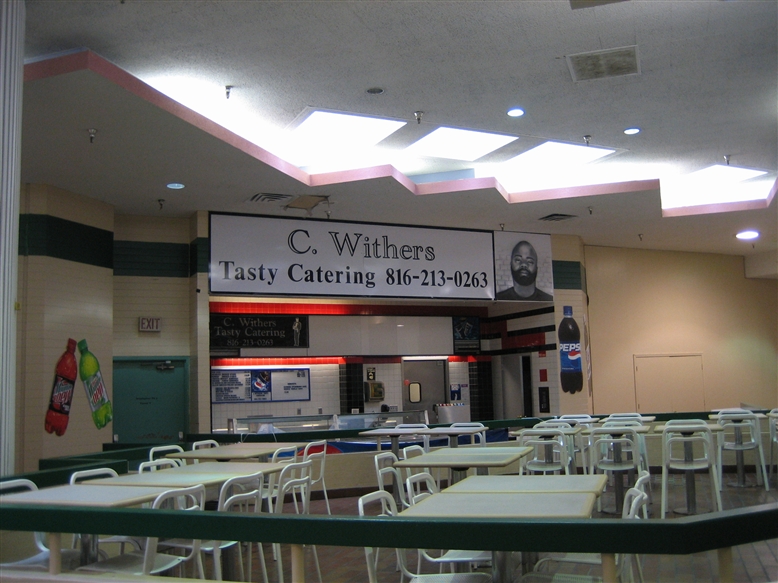 Today, Bannister Mall is a forgotten jewel in a depressed landscape. In 2006, around 3000 jobs left the Bannister area as the federal government relocated them elsewhere in Kansas City. Many strip malls around Bannister are troubled as well, and in August 2006 Wal-Mart Supercenter closed its location near Bannister Mall to relocate at the former site of Blue Ridge Mall, several miles north. The decline of this once-prosperous retail neighborhood is extensive, as people continue to shop in Lee’s Summit, Independence, or in Kansas and ignore the Bannister area.
Today, Bannister Mall is a forgotten jewel in a depressed landscape. In 2006, around 3000 jobs left the Bannister area as the federal government relocated them elsewhere in Kansas City. Many strip malls around Bannister are troubled as well, and in August 2006 Wal-Mart Supercenter closed its location near Bannister Mall to relocate at the former site of Blue Ridge Mall, several miles north. The decline of this once-prosperous retail neighborhood is extensive, as people continue to shop in Lee’s Summit, Independence, or in Kansas and ignore the Bannister area.
Despite these problems, there are still several dozen in-line merchants still operating inside Bannister Mall. With some exceptions, most of the stores inside Bannister today are local and transient, and many keep nonstandard hours. There is also a flea market operating in the former Dillards/Macys location; the stores in the mall would certainly fare better if an actual anchor existded. In addition, Bannister Mall has been renamed according to one article in the Kansas City Business Journal – to Three Trails Village, signifying the three wagon trails which converged here during pioneer days, including the famed Oregon Trail.
What do you think will become of Bannister Mall? Will it remain fallow until it eventually closes for good with no redevelopment initiative, or will something save it? Leave your experiences and general comments here. The pictures here were taken in 2001 and 2006.
2006:


















2001:

















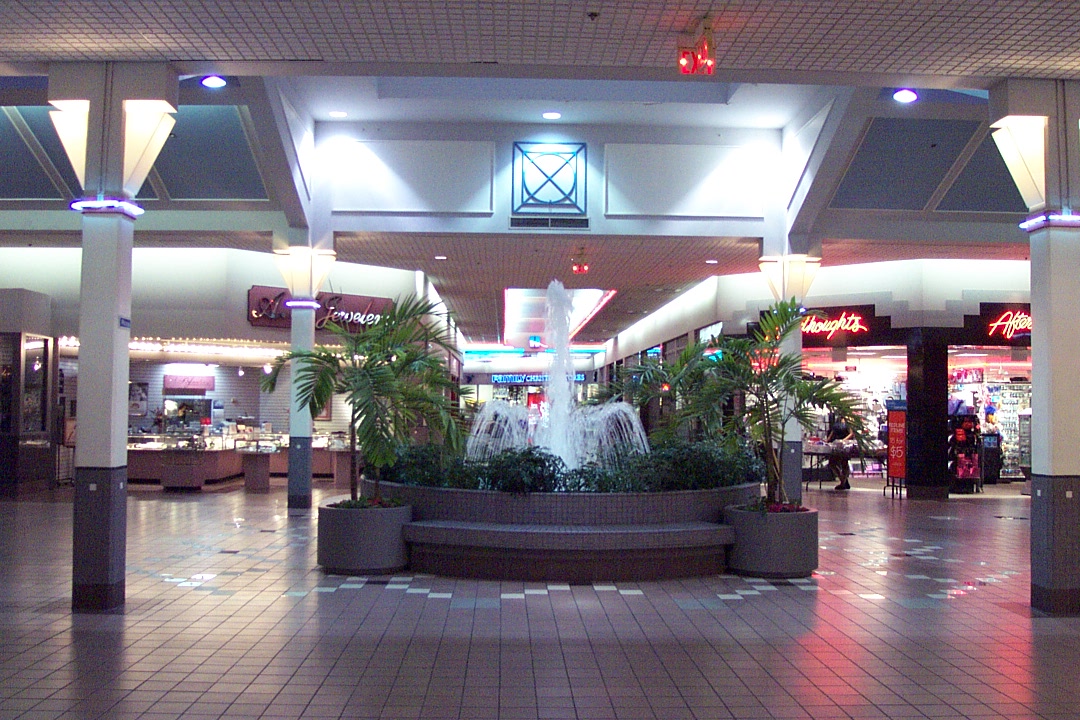








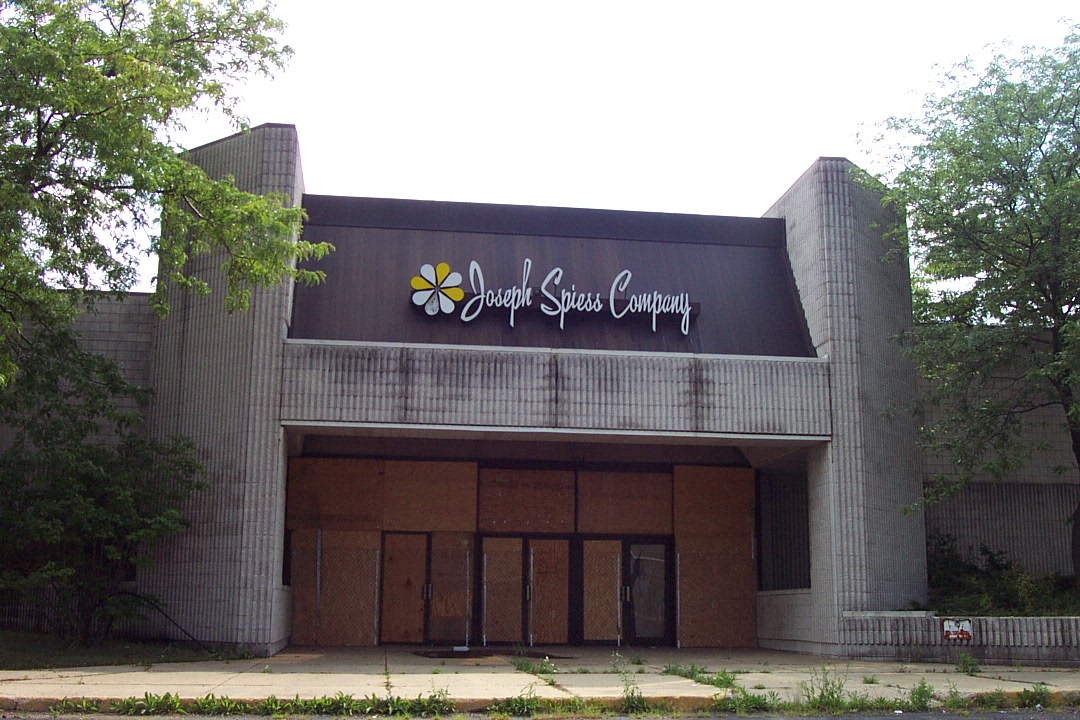
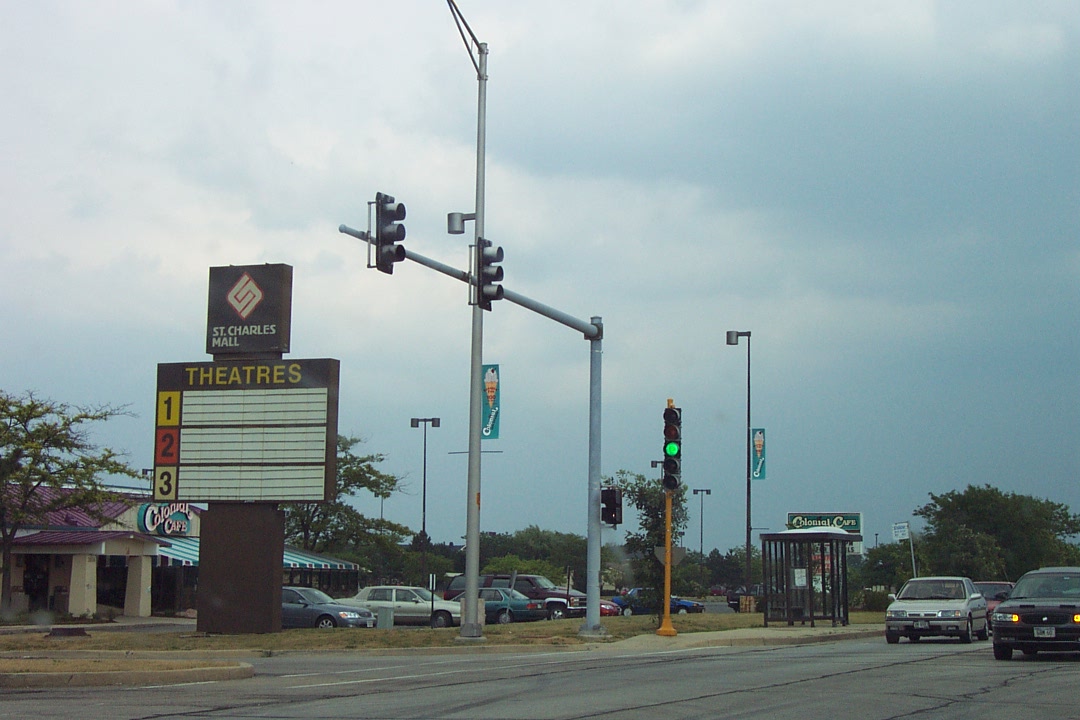
















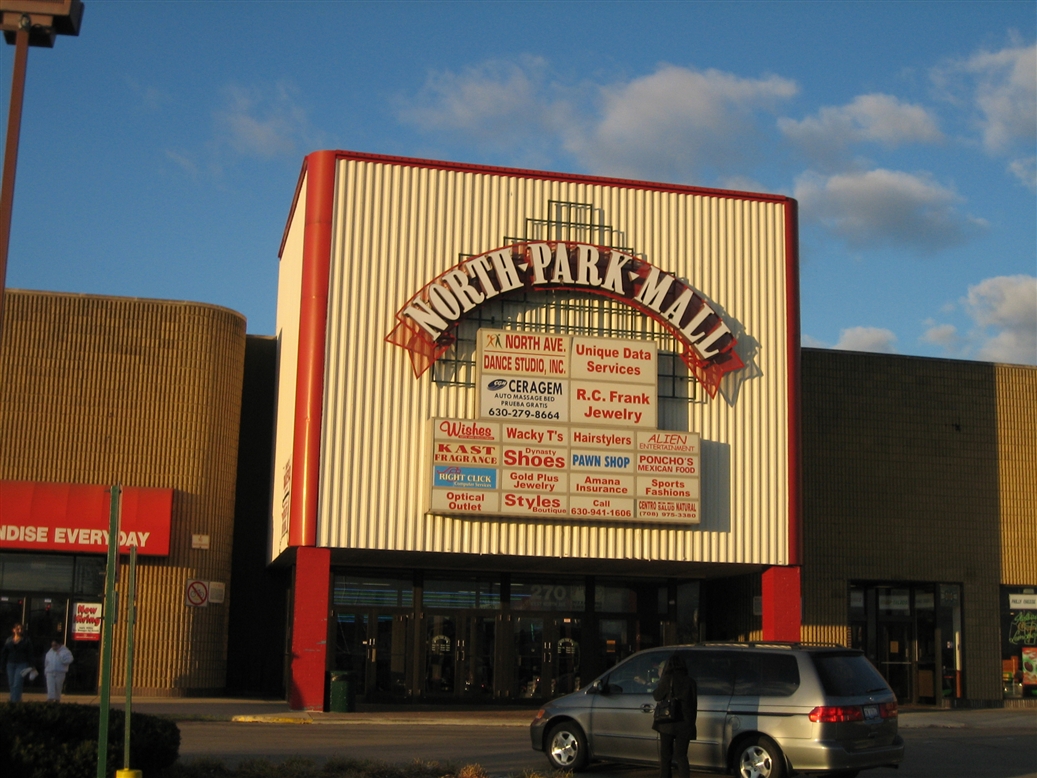
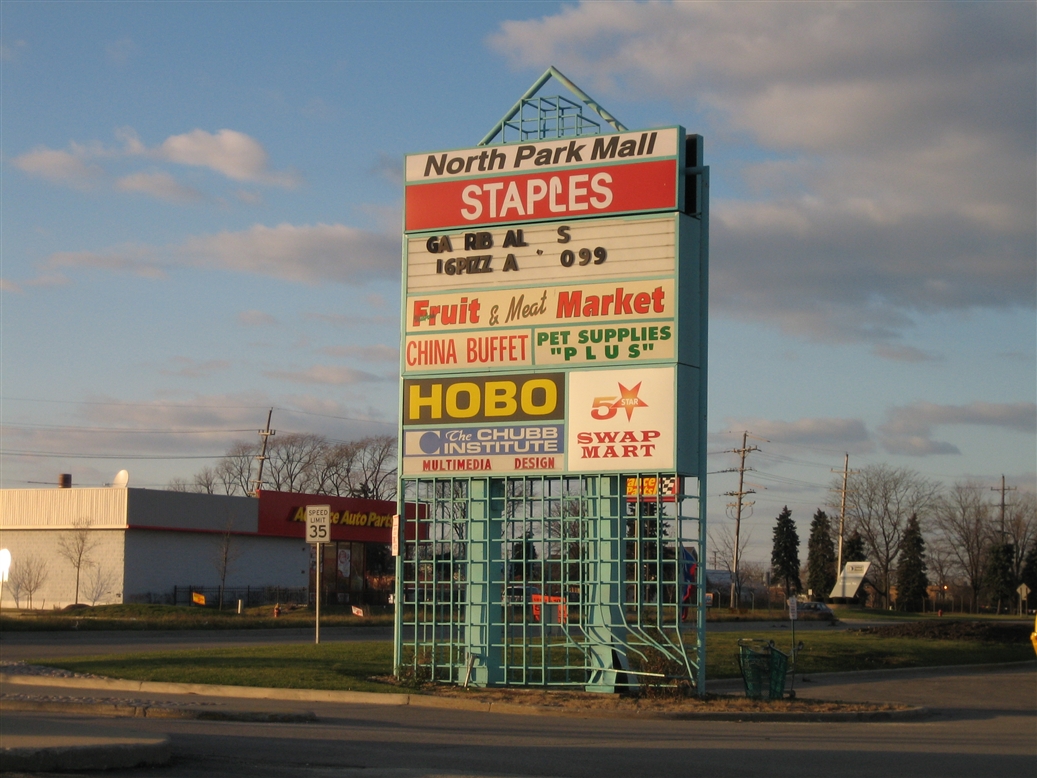
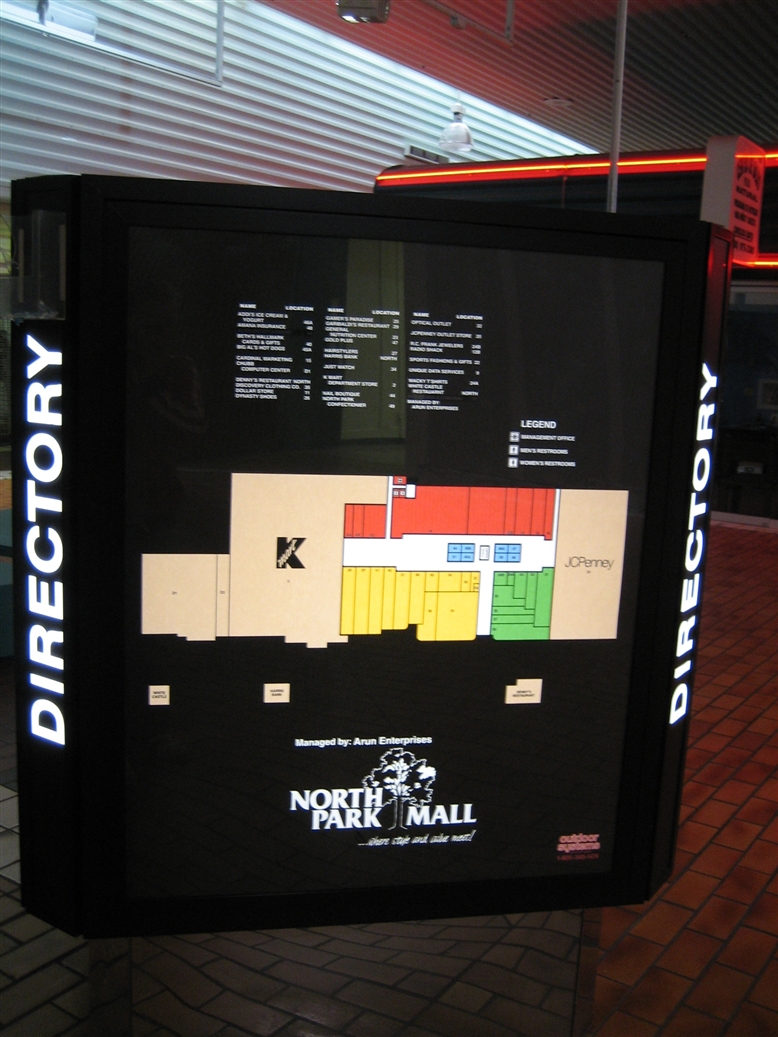
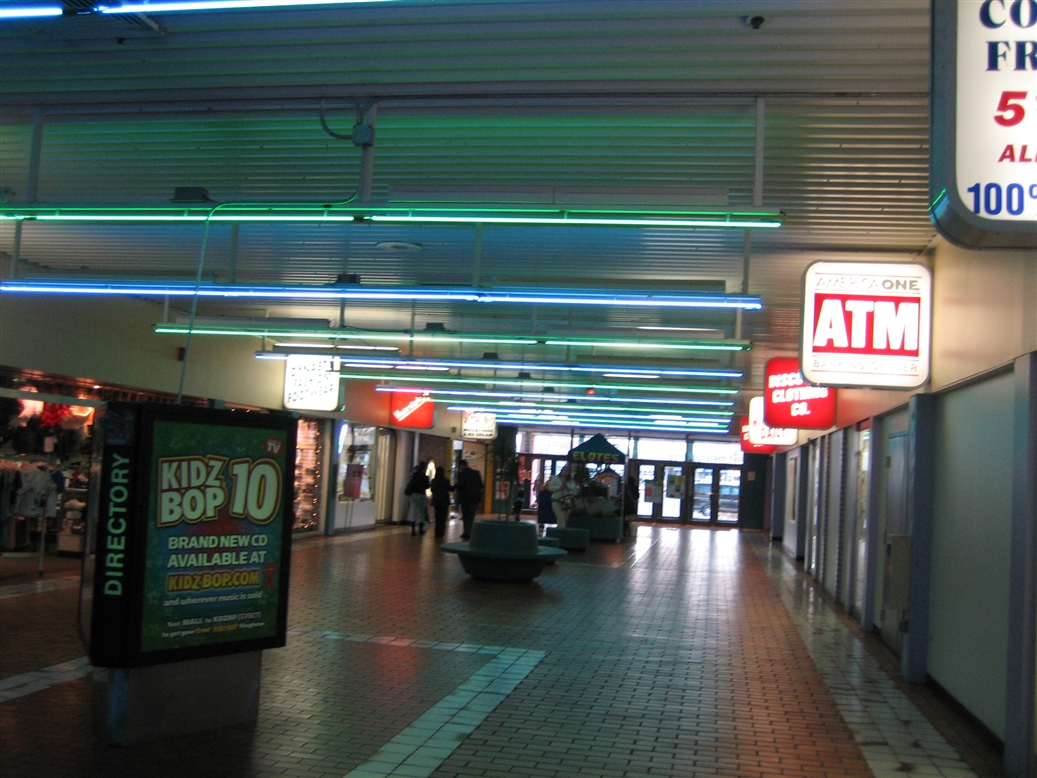











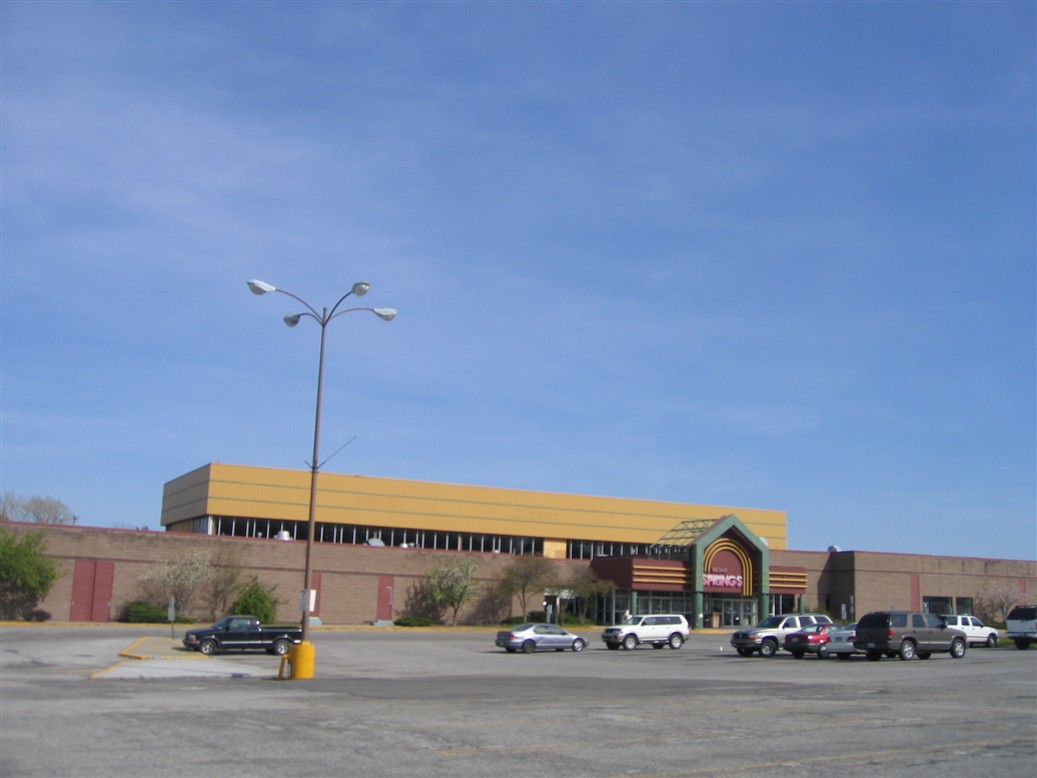
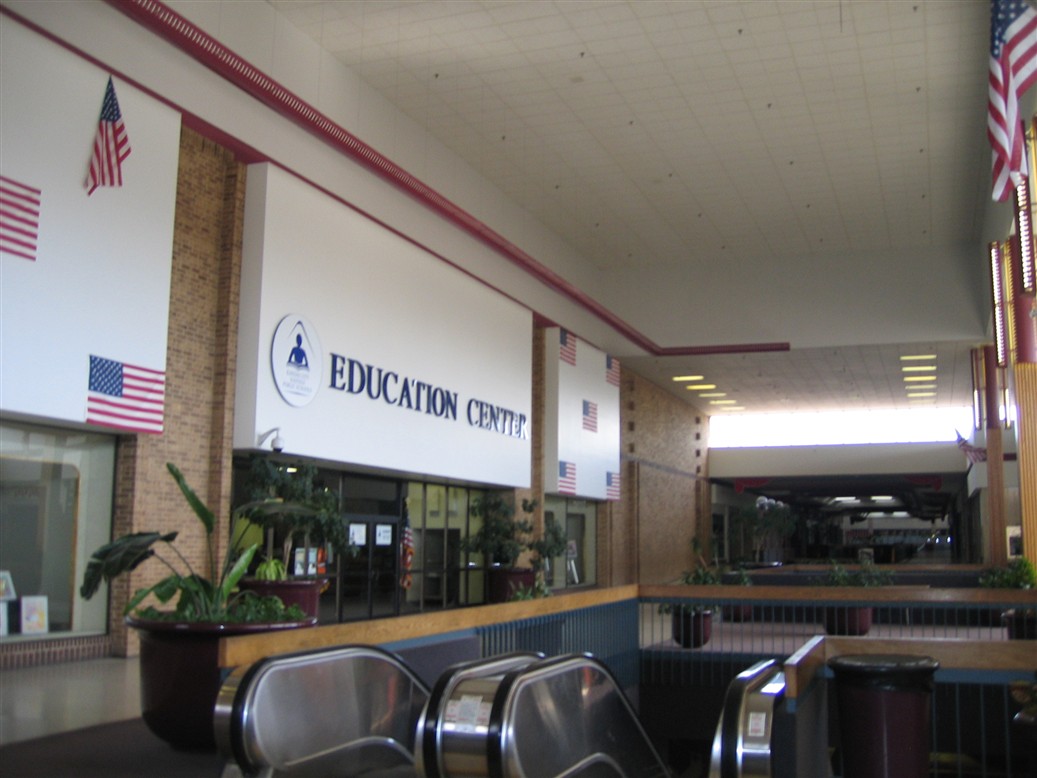
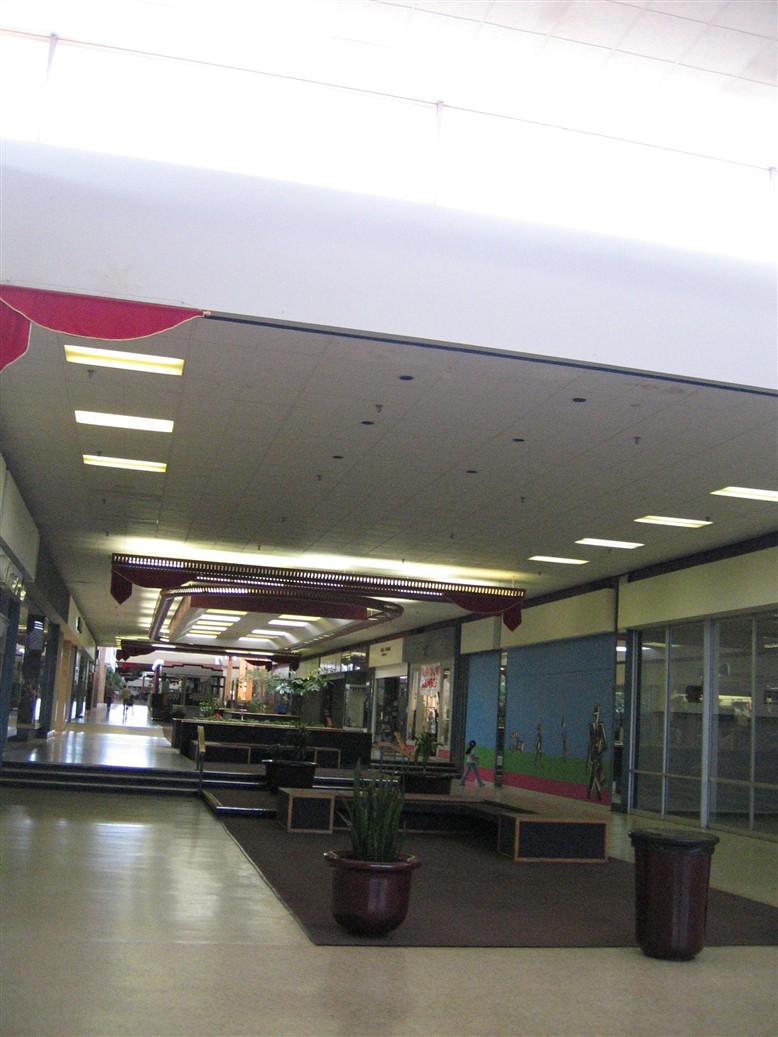










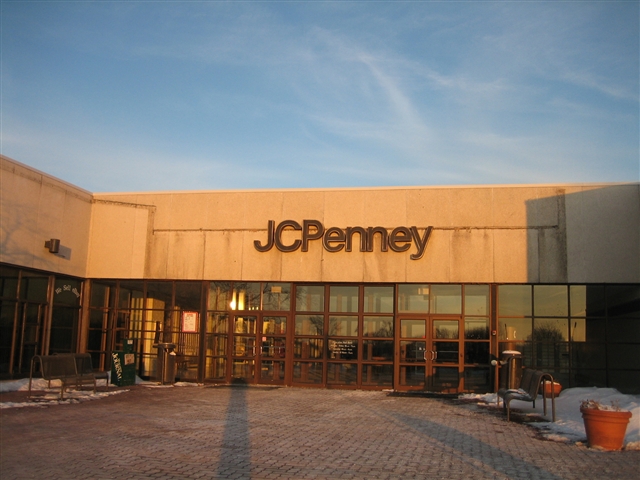

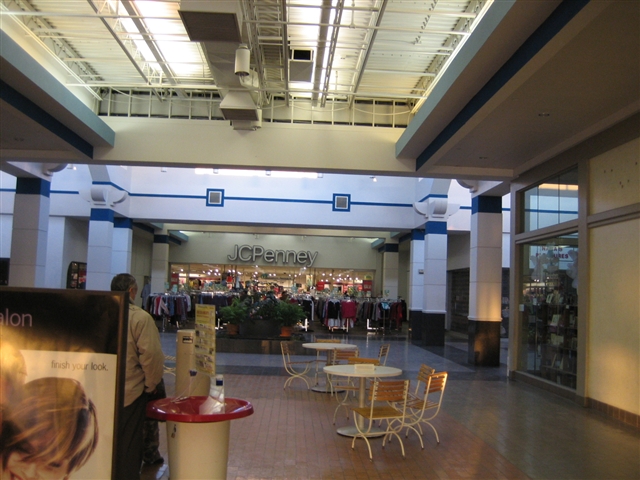













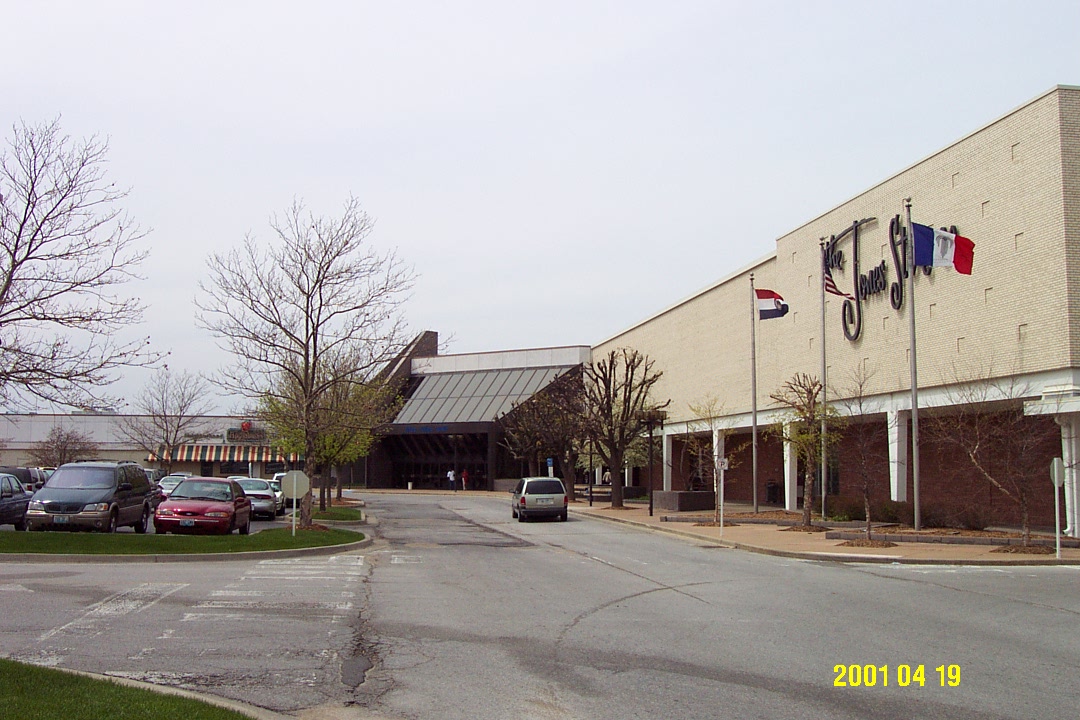
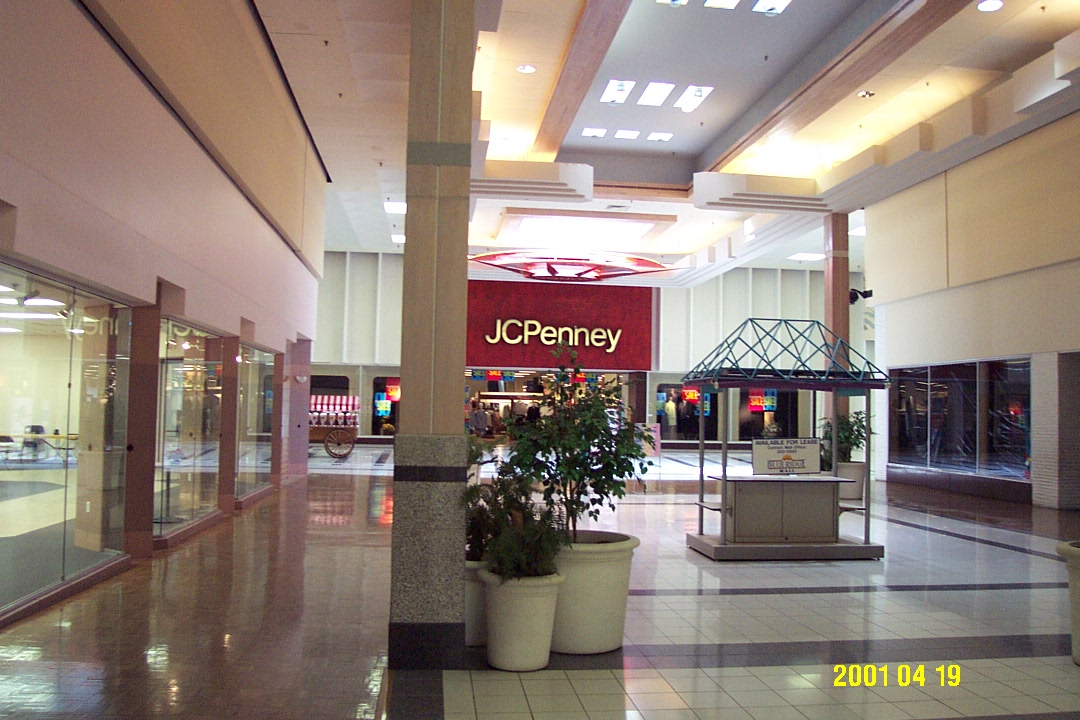



















































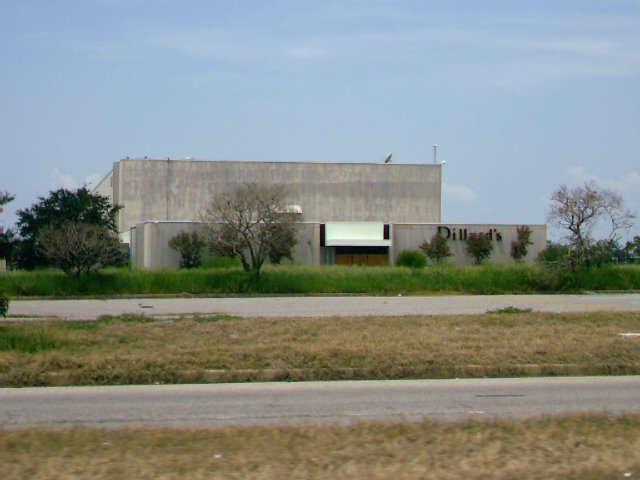
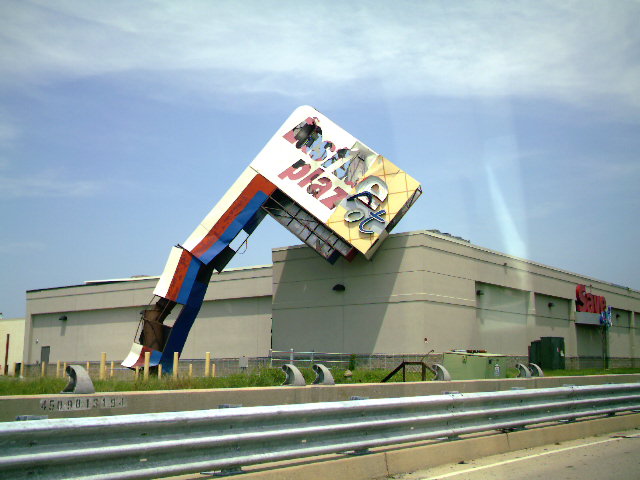









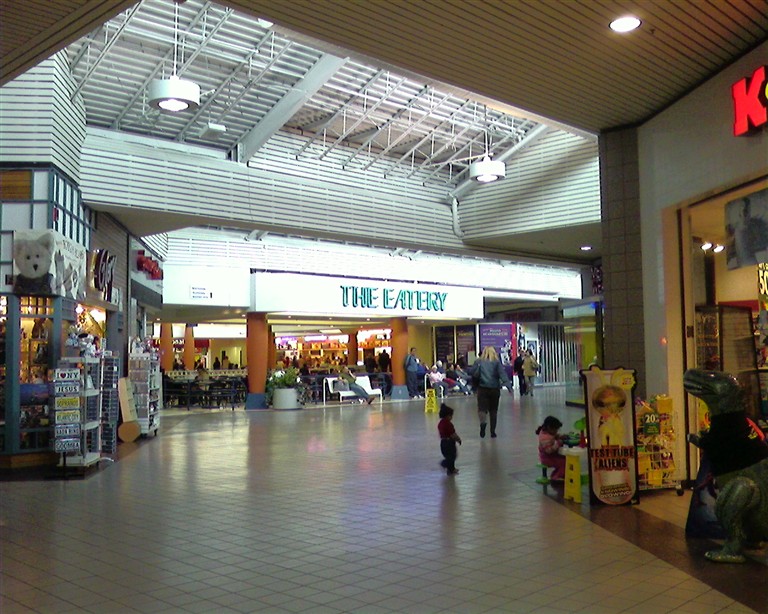











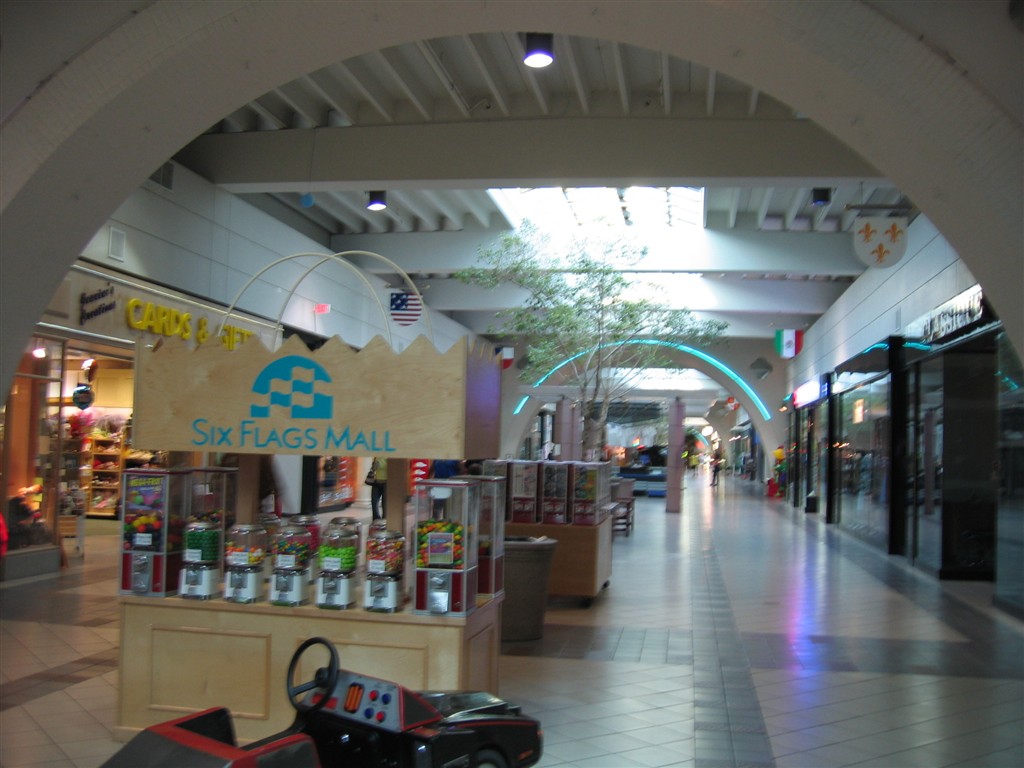
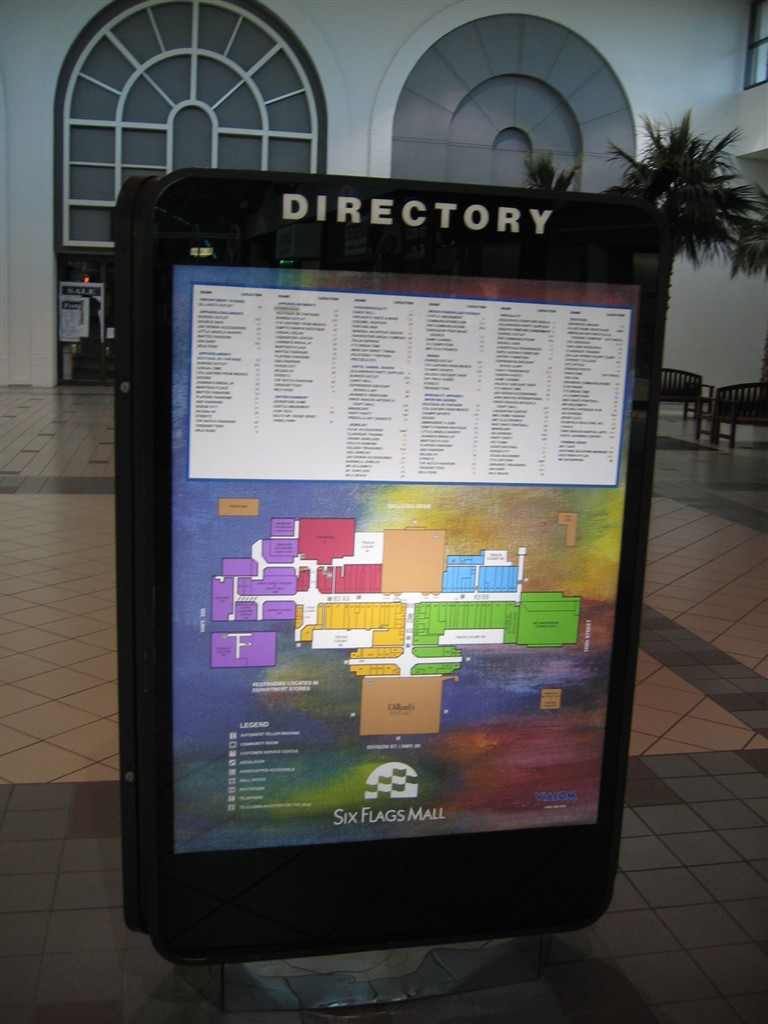 Six Flags Mall
Six Flags Mall
















